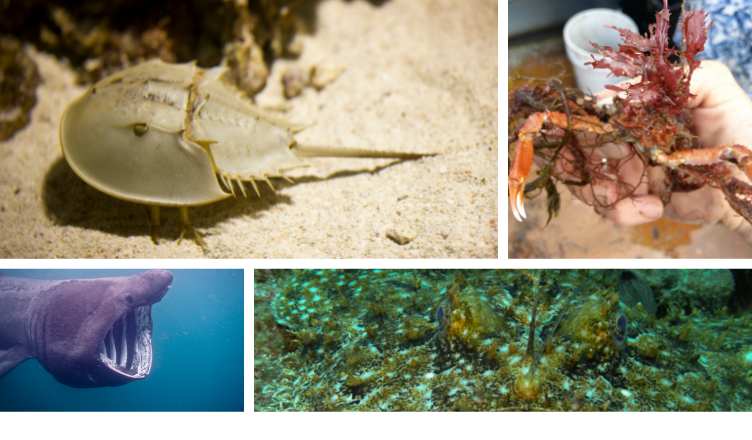The ocean is full of strange-looking creatures that have baffled, fascinated, and sometimes scared humans for as long as they have walked the earth. In this Creature Feature, we will explore some of the faces only a mother could love.
Horseshoe Crab (Limulus polyphemus)
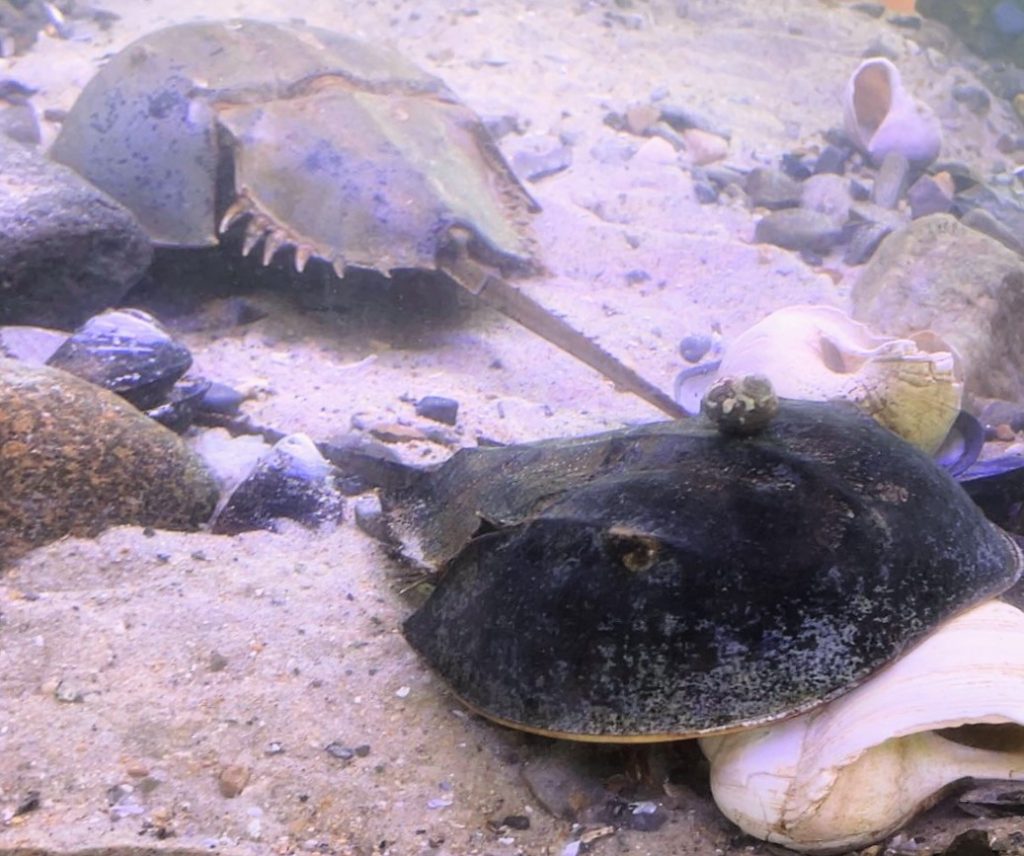
Horseshoe crabs or “living fossils” have roamed the earth for 300 million years. These shallow-water creatures are even older than dinosaurs! However, don’t let their name fool you; they are more closely related to arachnids (spiders and ticks) than they are to crabs.
Horseshoe crabs have ten eyes! Two eyes are compound eyes similar to human eyes, and the other eight are eyespots. The eight spots are found all over the body, including the tail. They differ from the compound eyes because they detect UV light from the sun or light reflected off the moon. Light detection is essential, so they know when to return to the breeding grounds for the mating season.
A horseshoe crab has ten legs. Some of these legs have pincers. They use their back legs for balance. They also have a long tail, called the telson. Many people think the tail is a weapon, but it is not. They use the telson to steer their head in whatever direction it is trying to walk and help flip themselves right side up if they end up upside down.
They like to eat worms, clams, dead animals along the ocean floor, and sometimes algae. Horseshoe crabs have no teeth, so everything they eat must be able to be crushed between their legs. While their overall appearance may give you the creeps, these animals are harmless to humans. They even help us in many different ways, including medical research and creating medical supplies.
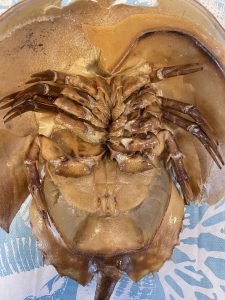
Where to Find Horseshoe Crabs
If you want to find a horseshoe crab in New Hampshire, the best time to look is in the spring and summer, when they come close to shore to mate. One place to find them in the wild is the Great Bay Discovery Center in Greenland, NH. The discovery center is an educational center with access to the Great Bay and surrounding wetlands. Horseshoe crabs migrate here every year to breed and come right up to shore at this location.
Another place to see a live horseshoe crab is at the Blue Ocean Discovery Center on Hampton Beach! We have educators on hand to tell you all about them!
Learn More About Horseshoe Crabs
Monkfish (Lophius americanus)
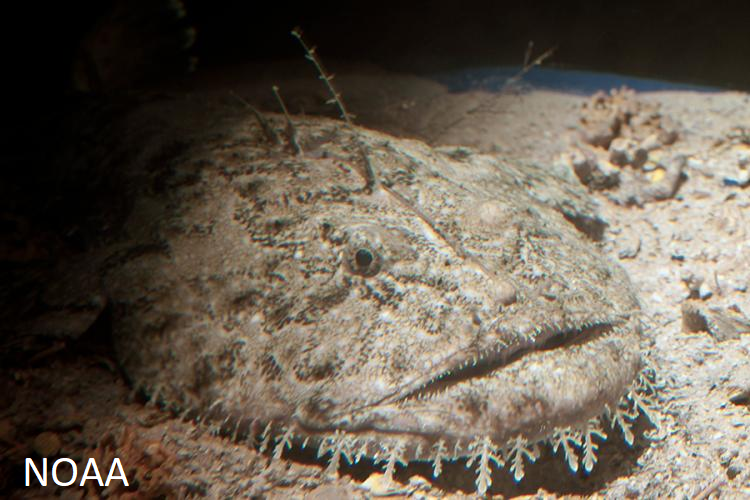
Monkfish, also known as the goose fish, are a brown to olive green-colored fish with a head that makes up half their body. Their mouths are full of fang-like teeth. Monkfish are slow animals that travel either by swimming or using their pectoral fins to walk along the ocean floor.
The monkfish is an opportunistic ambush predator. They will eat anything that is small enough to swallow, but their favorite foods as adults are other fish, mollusks, crustaceans. They also sometimes eat sea birds and diving ducks. They lie in wait for something to swim or dive next to them and will then snatch it up.
Despite its intimidating appearance, the monkfish is considered a delicious meal for seafood lovers! It’s actually referred to as “poor man’s lobster,” as the taste is very similar to lobster.
Where to Find Monkfish
Monkfish live in sandy, muddy, and/or shell-filled areas. They live both inshore and at depths of up to 3,000 feet. If you’d like to serve monkfish, you can search for monkfish vendors using a sustainable seafood search engine such as Fish Choice.
Spider Crab (Libinia emarginata)
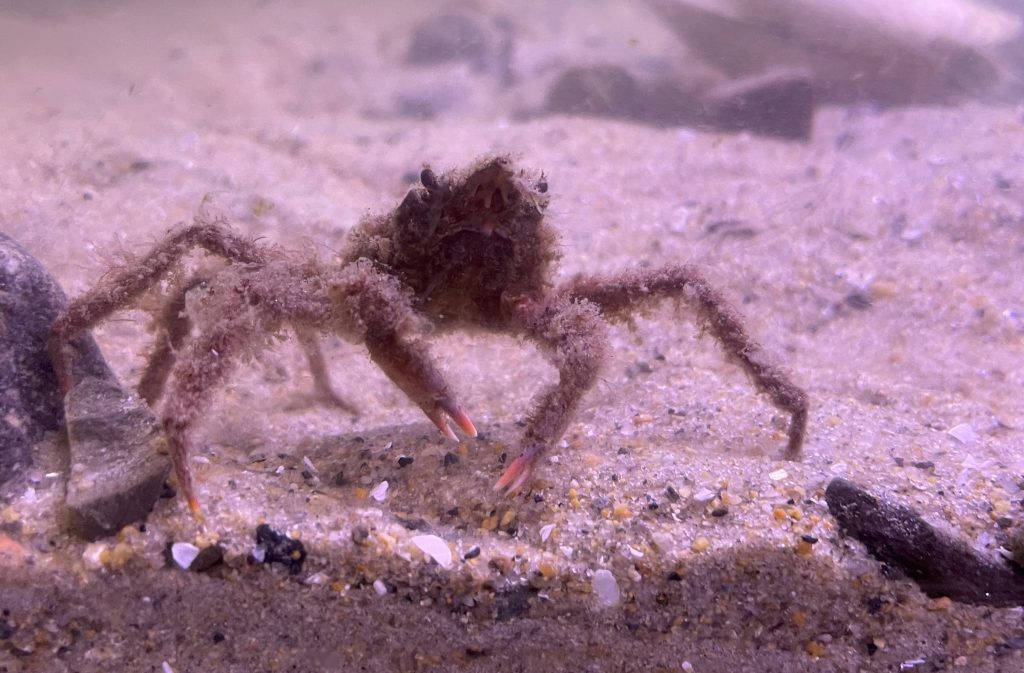
Despite its name, the spider crab is not a spider at all – it is a member of the crustacean family. They are found from shallow water to water about 150 feet deep. The carapace or body is around four inches long and can measure up to nine inches claw to claw. The body is round, and it tapers off to a point, making the animal look like it has a pointy nose.
Spider crabs usually appear very fuzzy, with their body covered in velcro-like hairs. The spider crab is also known as a decorator crab. They find various algae, seashells, and seaweed along the ocean floor and stick it to themselves to camouflage from predators.
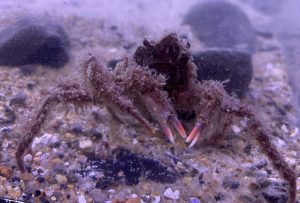
The spider crab is a non-threatening scavenger that uses small, skinny claws to shove detritus or dead animal matter and algae into its mouth. Spider crabs have poor eyesight, and their claws are weaker than other crabs, but they have chemoreceptors on the end of their claws. The chemoreceptors allow them to taste and “smell” the things around them. They are harmless to humans, but those afraid of spiders may be very uncomfortable among spider crabs.
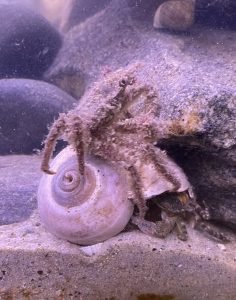
Where to Find Spider Crabs
If you want to see a spider crab for yourself, live ones are on display at our Blue Ocean Discovery Center in Hampton Beach and the Seacoast Science Center, located in Odiorne Point State Park in Rye, NH.
Basking Shark (Cetorhinus maximus)
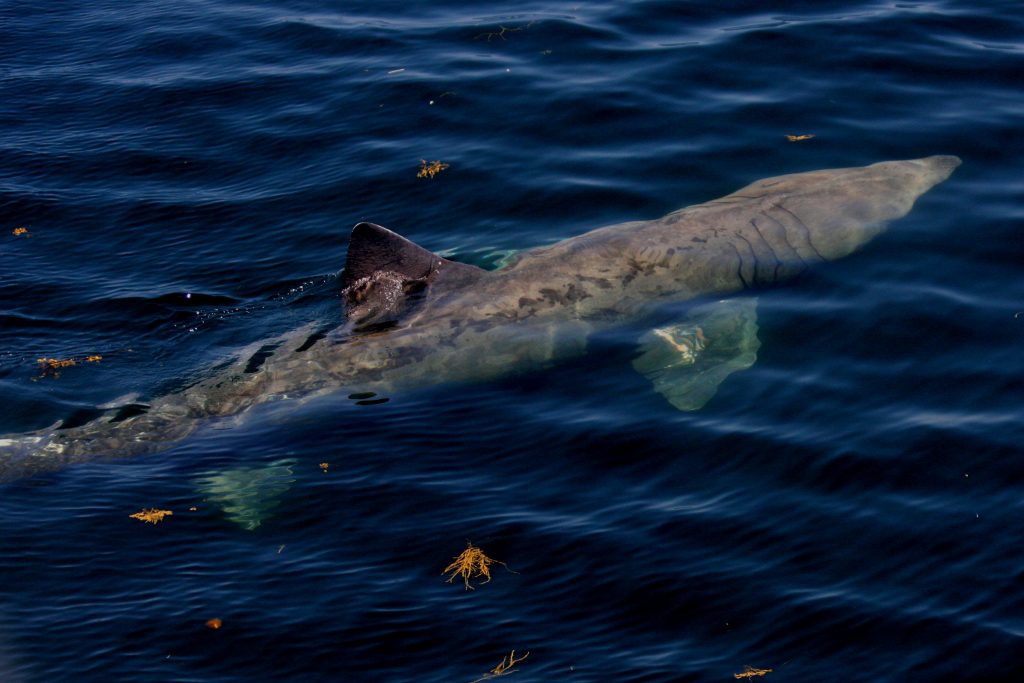
The basking shark is the second-largest fish in the world. They can be up to forty feet in length and weigh up to five tons. Basking sharks are slow swimmers often seen at the ocean surface. To some, it looks like they are “basking” in the sun, hence its name. However, it is often mistaken for a great white shark. People see the dorsal fin and large animal and are immediately reminded of the movie Jaws until they look closer.
Despite their size, basking sharks are filter feeders that feed on tiny organisms such as zooplankton. Inside their mouth, they have gill rakers covered in mucus. The mucus traps the planktonic prey and prevents it from escaping. Basking sharks filter up to 2,000 gallons of water every hour during filter feeding.
While they pose no direct threat to humans and are usually uninterested in us, they are in trouble. Basking shark populations have declined in recent years due to over-harvesting and environmental issues. Environmental threats include pollution, entanglement in fishing gear, marine debris, and boat strikes.
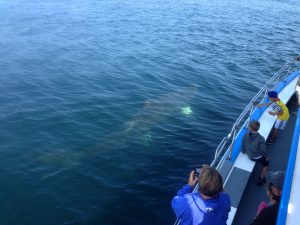
Where to Find Basking Sharks
Even though these species are not commonly kept in captivity, you might be lucky enough to see one for yourself on a whale watch. Whale watches in our area run during the spring, summer and fall. These trips give you a chance to see whales, sea birds, seals and sharks in their natural habitat. While basking sharks are not the focus of the trip it doesn’t mean you won’t stumble upon one during the journey. The Blue Ocean Society conducts research from Granite State Whale Watch located out of Rye Harbor.
Learn More:
Further References:
Horseshoe crab
- https://www.nwf.org/Educational-Resources/Wildlife-Guide/Invertebrates/Horseshoe-Crab
- https://animaldiversity.org/site/accounts/information/Limulus_polyphemus.html
- https://dnr.maryland.gov/ccs/Pages/horseshoecrab-anatomy.aspx
Monkfish
- https://www.wildlife.state.nh.us/fishing/profiles/monkfish.html
- https://www.fisheries.noaa.gov/species/monkfish
Spider Crab
- https://www.chesapeakebay.net/S=0/fieldguide/critter/common_spider_crab
- http://www.edc.uri.edu/restoration/html/gallery/invert/spider.htm
Basking shark

